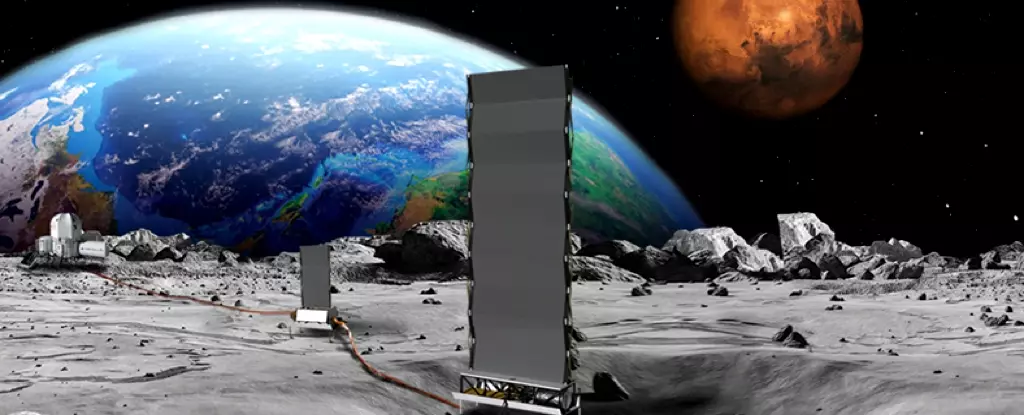Living and working on the Moon is no easy feat, with a multitude of challenges and dangers to overcome. One of the most critical aspects for successful lunar exploration is having a reliable source of power. To address this need, NASA has embarked on the Fission Surface Power Project as part of its upcoming Artemis program. This project aims to develop concepts for small nuclear fission reactors that can generate electricity on the lunar surface, ensuring a sustainable and long-term power supply. In the initial phase of the project, NASA has awarded contracts to three commercial partners to further develop preliminary designs for these innovative power systems.
Power is undeniably the most crucial element required to sustain life and work on the Moon. With the aim of establishing lunar bases that can support long-term exploration and scientific endeavors, NASA needs to ensure a continuous power supply. Unlike Earth, the Moon experiences extended periods of darkness during its 14-night-long lunar night, making solar power alone insufficient. Therefore, nuclear power, specifically nuclear fission reactors, emerges as the most viable solution to address the power needs of lunar bases and guarantee their success.
While solar power will still play a significant role in powering lunar bases, nuclear fission reactors offer several advantages that make them indispensable. Unlike solar power grids that rely on sunlight, nuclear reactors can operate round-the-clock, regardless of the presence of sunlight. This capability is particularly valuable during the lunar night, where solar panels would be ineffective. Nuclear reactors can be strategically placed in regions that experience partial or full shadow, which often coincide with the presence of in-situ ice reservoirs. By utilizing nuclear power, lunar bases can have a continuous and reliable source of electricity, ensuring the safety, productivity, and success of lunar explorations.
NASA acknowledges that a combination of both solar and nuclear power installations will be essential for supplying the electricity needs of habitats and science labs on the Moon. The agency’s focus is on developing reactors that can operate autonomously for at least a decade without requiring human intervention. This approach minimizes the risk of accidental radiation exposure and allows lunar explorers to concentrate on their primary tasks of scientific research and exploration. The reactor design specifications outlined by NASA dictate that the system must weigh under six metric tons and produce 40 kilowatts of power. This capacity is sufficient to power habitats, grids, and science experiments, and even compares to the energy required to supply 33 homes on Earth.
To encourage innovation and novel approaches, NASA intentionally provided minimal requirements to the commercial partners involved in the Fission Surface Power Project. This approach allowed each company, including Lockheed Martin, Westinghouse, and IX, to explore new directions and push the boundaries of reactor design. The agency sought diversity in approaches, resulting in unique and distinct designs from each partner. This emphasis on thinking outside the box reflects NASA’s commitment to pushing the frontiers of technology and ensuring the development of the most advanced and efficient lunar power systems.
Having completed the initial phase, NASA is now working on a Phase 2 solicitation, slated for 2025. This next stage will build upon the feedback received from the commercial partners and pave the way for further progress and refinement. The agency aims to obtain a fully functional system for use on the Moon by the early 2030s. This system will undergo rigorous testing and validation to ensure its reliability and safety during lunar operations. Looking ahead, NASA envisions the adaptation and redesign of nuclear fission reactors explicitly tailored for use on Mars, once the technology has proven itself on the Moon.
As NASA’s Artemis program sets its sights on returning to the Moon and establishing sustainable lunar bases, the development of a reliable power source becomes paramount. The Fission Surface Power Project represents an innovative and forward-thinking approach to meet this need. By harnessing the potential of nuclear fission reactors alongside solar power, NASA aims to ensure a continuous and independent power supply on the Moon, overcoming the challenges posed by the lunar night. As humanity takes its next steps towards exploring and inhabiting celestial bodies, the fusion of advanced power systems paves the way for a brighter future beyond Earth.



Leave a Reply